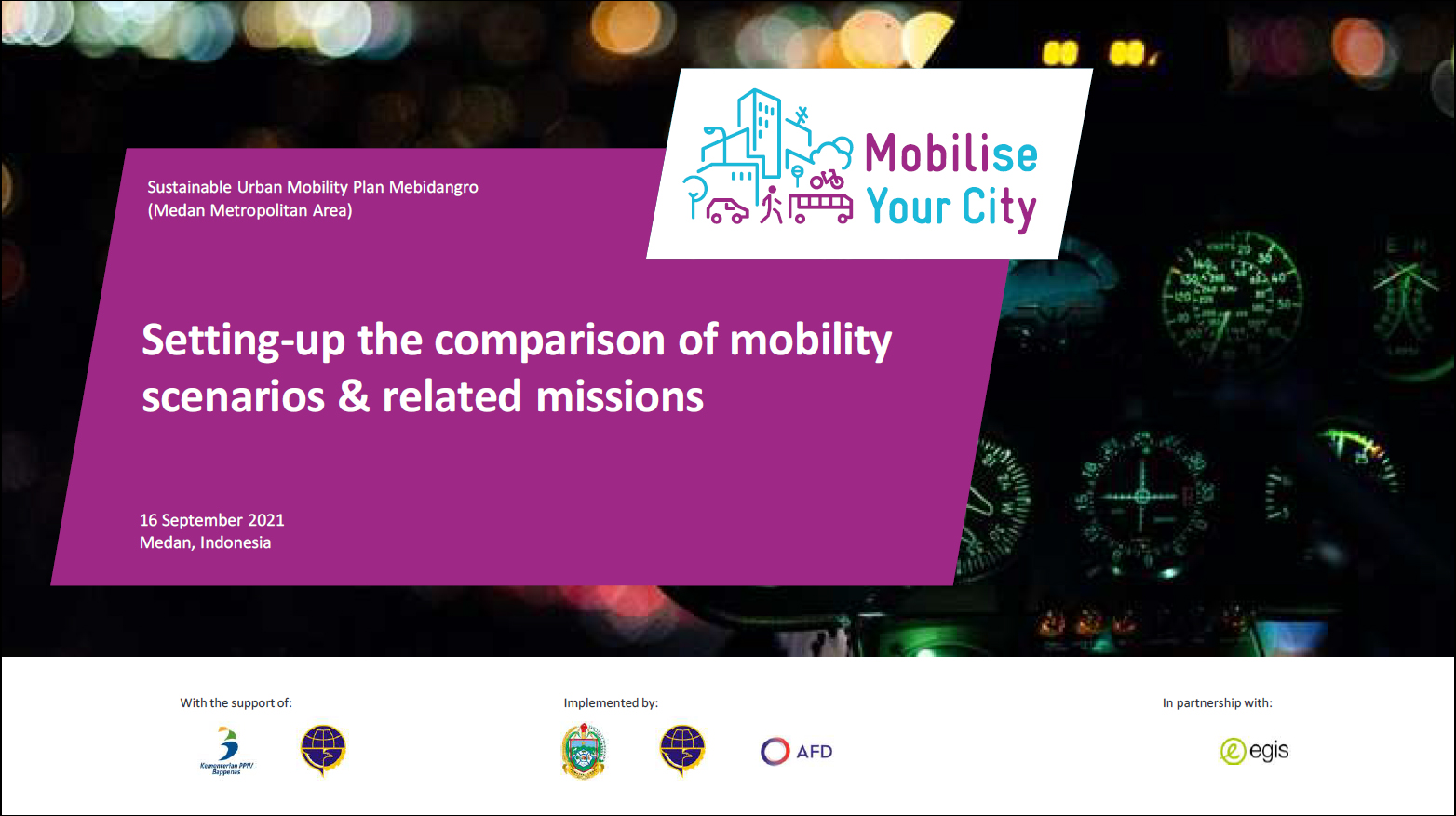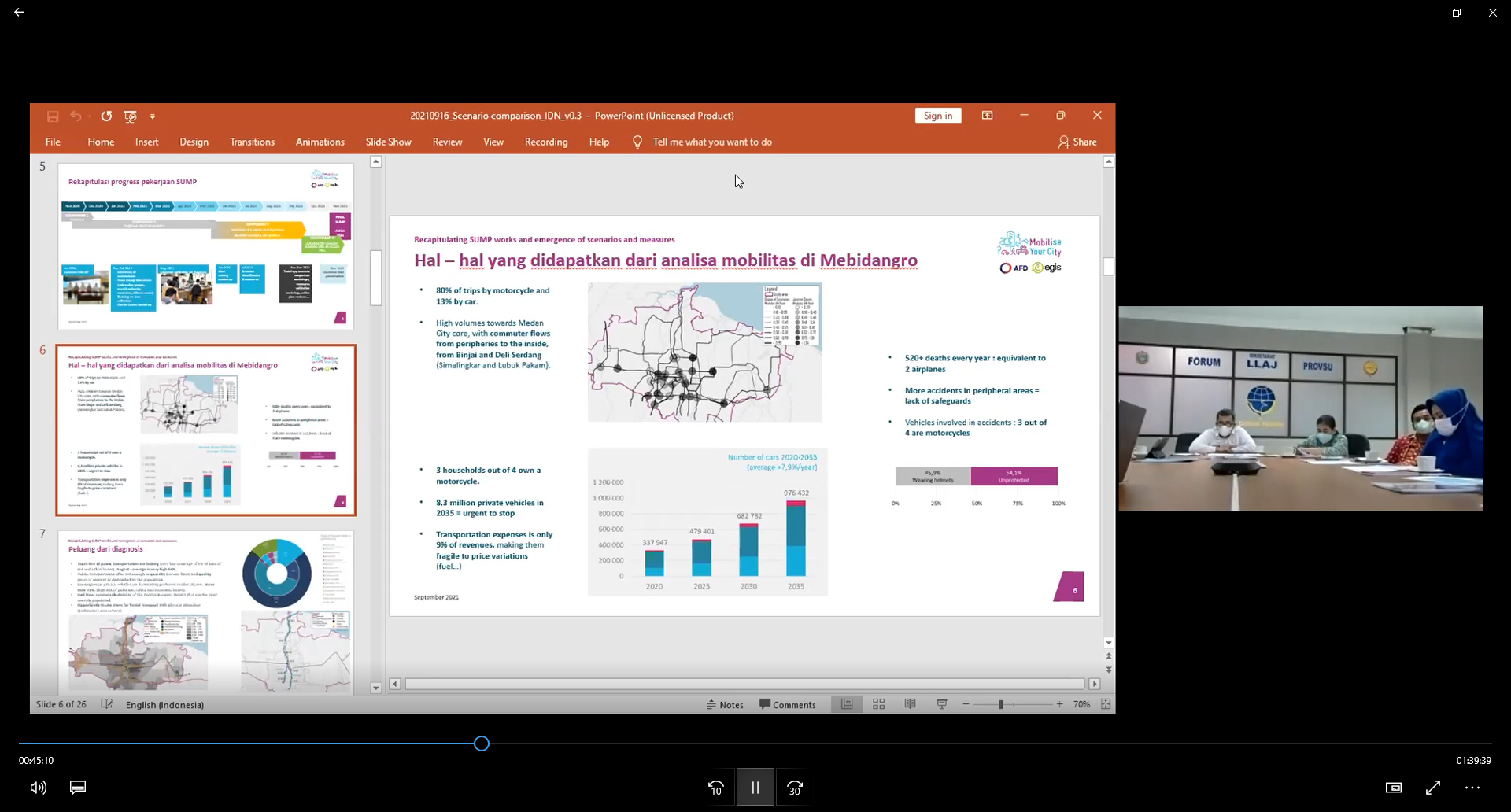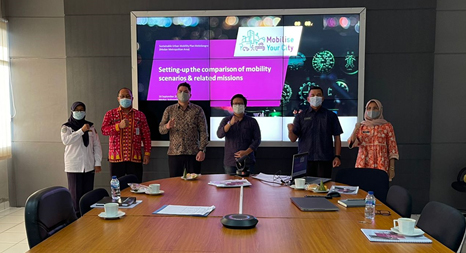How comparing mobility scenarios is changing mobility in Medan Metropolitan Area

The Sustainable Urban Mobility Plan (SUMP)’s Technical Committee compares measures and scenarios of the SUMP
The technical committee in charge to monitor the elaboration of the SUMP of Medan Metropolitan Area (Indonesia)[1] organised a strategical workshop on September 16th, an opportunity to gather the main stakeholders in charge to monitor the development of the SUMP. This included key officers from the technical departments of the different cities and regencies’ part of Mebidangro, as well as representatives of the Transportation Agency of North Sumatra Province, region of Medan but also from the Regional Development Planning Agency (Bappeda) of North Sumatra Province.
This workshop aimed at presenting the scenarios that can be developed for the SUMP as well as the criteria that are needed to compare them and will be chosen to ensure the monitoring of the SUMP implementation. The workshop allowed the participants to compare and discuss the three following scenarios:
- Scenario 1: “Reference case” proposes a development path of the mobility where the current situation evolves as usual in horizon years, and projects that are already committed in baseline year 2020 are implemented.
- Scenario 2: “Conservative” introduces priority measures as for instance to introduce calm mobility areas, to increase safety, to improve the existing assets, to organise land-use with a territorial approach. Within this scenario, investments are kept to a minimum, and current assets are optimised.
- Scenario 3: “Disruptive” forecasts the construction of a Mass transit equipment as well as changes in governance of mobility for Medan Metropolitan Area. With this scenario, investments are important and there is a strong support towards a change of paradigm.
By discussing each of the above-mentioned scenarios, it was shown that the conservative and disruptive scenarios have sharper identities and specific characteristics. However, in order to reach urban mobility goals by different paths, it was explained that any of both scenarios, excepting the Business As Usual scenario (i.e the first one) require important investments.
In addition to selecting the final scenario and the corresponding set of mobility measures that should apply in the context of the SUMP, this workshop allowed stakeholders to identify the criteria that are used to compare them. Those criteria revealed political, economic, social, technical and financial priorities and approaches that the stakeholders need to consider. As outcomes of this meeting, some criteria will be adjusted as for instance to consider with a higher weight the gender inclusion criteria as well as the possibility to develop Transit Oriented Development areas (following the construction of a mass rapid transit line).


Due to Covid situation in Indonesia, a mix of digital and physical meeting of the Technical Committee (Source: Egis)
Breaking down the selected scenario into an action plan
After the selecting the scenario, which can also be an alternative scenario between the “conservative” and the “disruptive”, the Technical Committee will discuss an action plan to allow the Medan Metropolitan Area implement of the SUMP.
Since November 2020, the Medan Metropolitan area has engaged in a process to transform and modernise its urban mobility system with the elaboration of a SUMP.
Under the MobiliseYourCity Partnership, this Technical Committee meeting was organised by the Transportation Agency of North Sumatra Province, facilitated by AFD, and animated by Egis Rail.
[1] Also known as Mebidangro as it gathers the City of Medan, the City of Binjai, the Regency of Deli Serdang and the Regency of Karo.